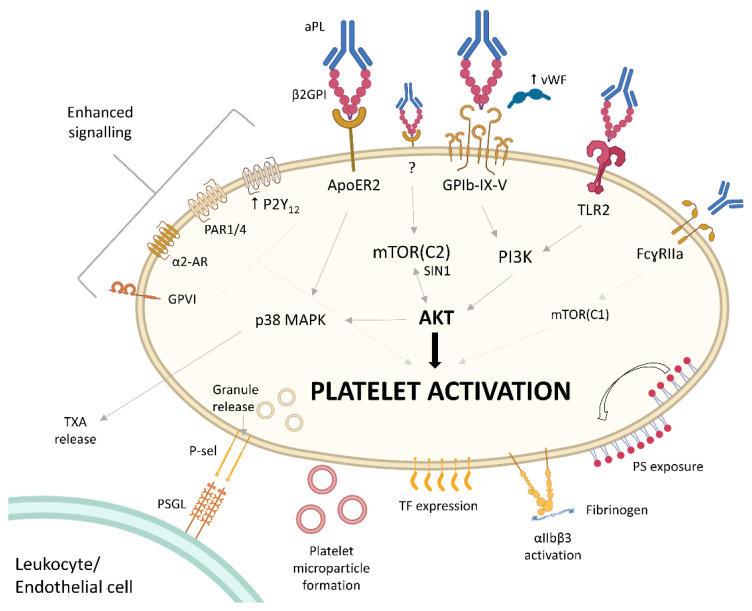Figure 2.
Platelets exhibit hyperreactivity through many pathways in antiphospholipid syndrome (APS). A large number of platelet receptor agonist stimulation pathways result in greater platelet activation in APS with lower concentrations of agonist. This is due to the “priming” by antiphospholipid antibodies (aPL) complexed to dimerised open-conformation β2 glycoprotein binding to Apolipoprotein E receptor 2 (ApoER2), glycoprotein (GP)Ib-IX-V receptor, and toll-like receptor 2 (TLR2). There is evidence that the Fc portion of some aPL can also prime platelets to hyperreactivity through the FcɣRIIa receptor and mTOR cluster 1 (mTORC1) signalling. The activity of AKT appears central to many of the priming pathways, most critically with the mTORC2-SIN1-AKT axis, although the upstream receptor for this pathway (shown as “?”) has not yet been identified. Hyperreactivity has been identified with ADP agonist stimulation through the P2Y12 receptor, which is overexpressed in APS patient platelets. Protease-Activated Receptor (PAR) 1 and 4 signalling triggered by thrombin, α2-adrenoreceptor (AR) stimulated by adrenaline, and collagen signalling (presumably through GPVI receptor and α2β1 integrin) have all been shown to be hyperreactive. The platelet activation resulting from these pathways are illustrated. TXA—thromboxane, P-sel—P-selectin, TF—tissue factor, PS—phosphatidylserine. Created with Biorender.com.

